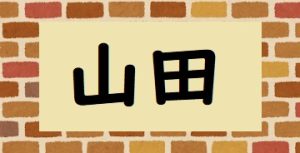In this section, we’ll share our students’ compositions.
表札*English follows Japanese.
サイ コウゼン(中国)
10月26日、日本人とZOOM交流会がありました。交流会で、日本には表札というものがあることを聞きました。この話に興味がありました。
表札は居住者の氏名をドアなどに表示する札です。表札を初めて見たのはドラえもんのアニメの中に主人公の名前「野比」と書いた表札です。とてもおもしろいと思いますが、何のためにうちの前に名前を書くのかわかりませんでした。
表札は郵便を送る人が場所を見つけやすいようにするためですと聞きました。そして、隣に住んでいる人は誰かわからないと心配している人もいるからです。この話を聞いて、表札はとても便利な物だと思いました。 表札は中国で見たことがありません。中国では同じ姓の人がたくさんいますから、表札を作っても意味がないかもしれません。
日本の家族はみんな同じ姓ですから、とても家庭的な雰囲気があります。表札を見ると、その家の家族のみんな一緒に暮らす幸せを感じます。とてもいい文化だと思います。そして、日本に行ったら、散歩しながら、いろいろな表札を見てみたいです。
Hyousatsu
サイ コウゼン (China)
On October 26 we had an Exchange Meeting on ZOOM with some Japanese people.
During the conversation, I’ve heard that in Japan people use name plates on their house’s front doors. I was interested in this topic.
On the plate people write their family name and then put it on the front door of their residence. The first time I saw this was in the anime Doraemon, when we see the“Nobita”name plaque in front of the main character’s house. It was fun to watch but I couldn’t understand why they had to put a name in front of the house.

It appears that in Japan they use the name plates to make it easier for the postman to find the house when delivering a parcel. And also, because many people in Japan feel safer if they know the name of the person who lives next to them. I thought that was very convenient. There are no such plaques in China. And even if there were, China has too few family names that it would make the name plates useless.
In Japan one family shares one single surname, and it’s beautiful to see the family name plates and imagine one happy family living together under the same roof. I like this cultural aspect. Once I will finally be able to go to Japan, I would like to walk in a Japanese neighborhood and look at all the various name plates.



